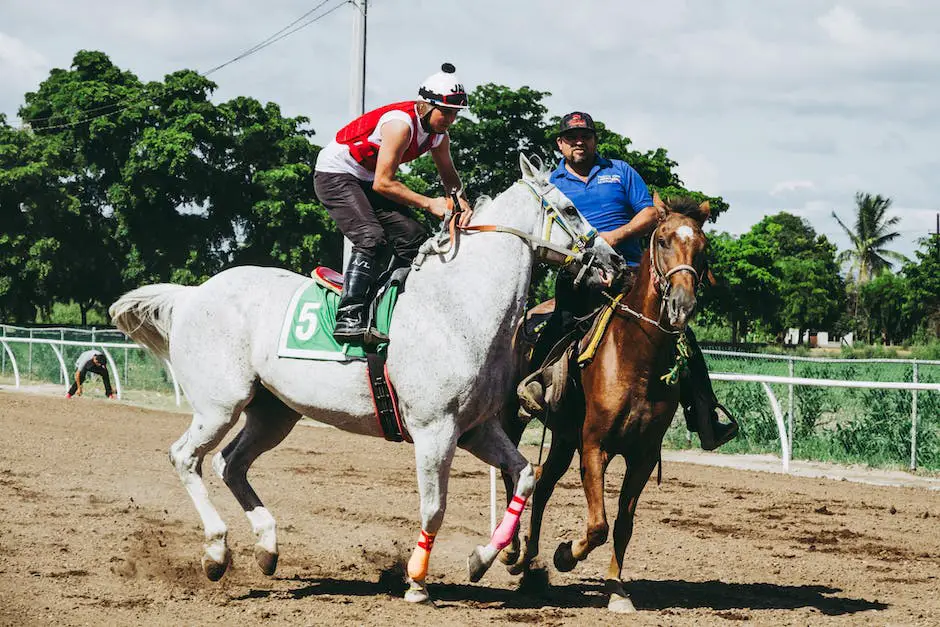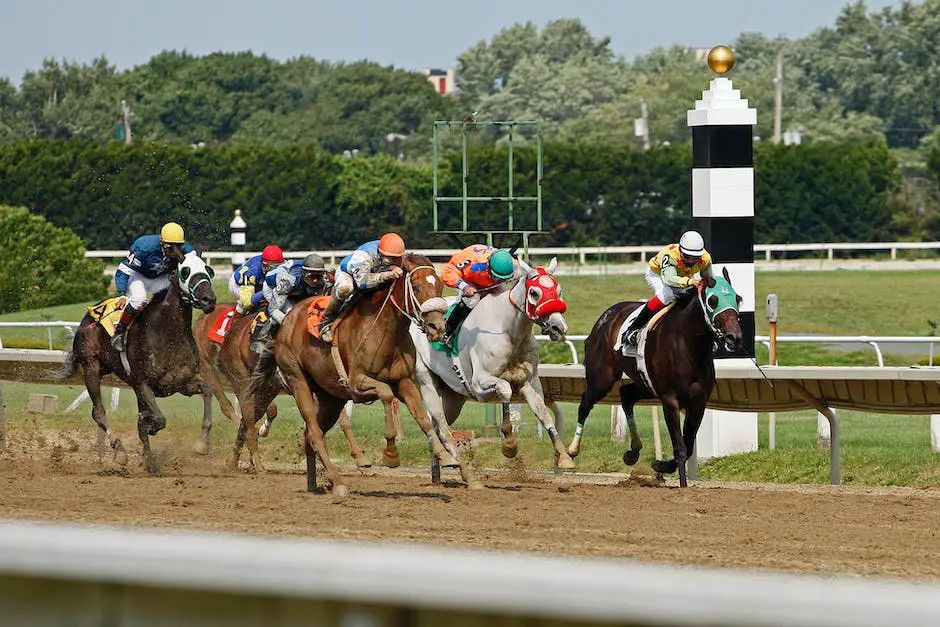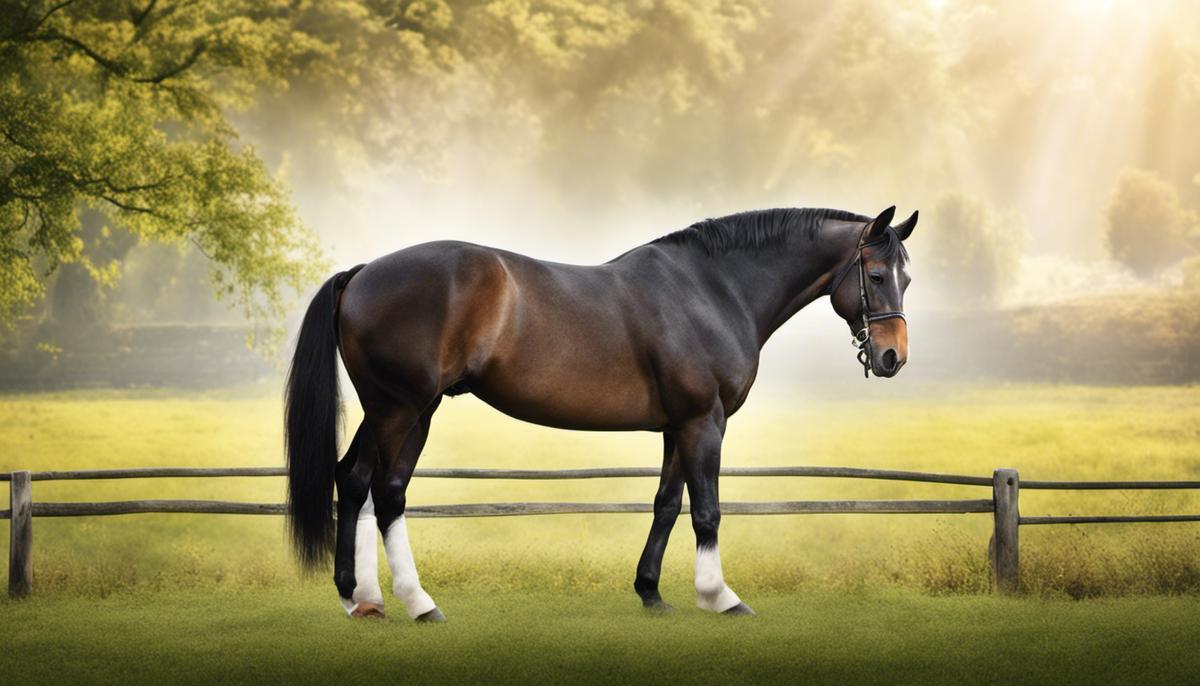Germany’s centuries-long equine history and heritage have made it a global leader in horse breeding and equestrian sports, particularly in regard to its admired German Sport Horses. Renowned for their versatility, athleticism, and temperament, these creatures highlight the art of selective breeding and expert training. This article dives deep into the rich history and breeding practices that yield these top-notch horses, meticulously scrutinizing the various types and their distinctive characteristics. In addition, it sheds light on the multiple uses of these horses and carefully explores the unique training and care principles practised to optimize their athletic performance. Lastly, it provides a comprehensive assessment of the industry and economic impact of German Sport Horses, a testament to their international prominence and value.
Table of Contents (Horspedia)
History and breeding of German Sport Horses
History of German Sport Horses
German sport horses have a rich and complex history, with roots that trace back to the Middle Ages. They arose from various equine breeds including the Thoroughbred, Trakehner, Hanoverian, and Oldenburg. Each of these breeds infused unique characteristics, such as endurance, size, temperament, and gait, into the German Sport Horse.
Germany’s use of selective breeding and strict performance testing contributed greatly to the development of these sport horses. The long-term breeding strategy aimed to produce a horse that excelled in a variety of equestrian sports such as dressage, show jumping, and eventing.
World War II had a transformative effect on the landscape of horse breeding in Germany. Many of the best horses were lost or scattered during the war, forcing Germany to reestablish its breeding program from the ground up. Post-war horse breeding was focused on creating a versatile, strong, and reliable sport horse.
Breeding of German Sport Horses
In the breeding of German sport horses, particular importance is placed on ensuring that the horses have excellent temperaments, are easy to ride, and possess a propensity for sport. It’s also critical for them to demonstrate a high willingness to perform, coolness, and courage. To achieve this, stringent selection and breeding methods are employed.
Horse breeders in Germany follow a systematic and methodical approach to the breeding of sport horses. Mares and stallions are subjected to rigorous performance tests to assess their suitability for breeding. The pedigree, conformation, and athletic ability of the horse are all considered in these evaluations.
Genetics in the Breeding of German Sport Horses
Genetics play a key role in the breeding of German Sport Horses. Through selective breeding, desirable traits are enhanced while undesirable traits are minimized. This process has resulted in a unique genetic pool that is carefully managed through strict breeding protocols.
Genetic testing is often conducted to eliminate the risk of certain genetic diseases and undesirable traits being passed onto future generations. These tests also provide breeders with valuable information about the athletic potential of the horses and guide them in the selection of suitable matches for breeding.
Evolution and Selection Methods
The evolution of German sport horses showcases a unique blend of breed refinement and selection methodologies. From the initial crossbreeding of various German Warmbloods and Thoroughbreds, to the implementation of stringent studbook selection procedures, the development of this sport horse is underpinned by a dedication to quality and excellence in performance.
In the selection process, young horses are subjected to a standard set of performance tests. These tests measure the horse’s ability in three riding disciplines: dressage, jumping, and cross-country. Judges evaluate the horses based on various criteria, and only those that meet the high standards are considered for breeding.
An Intriguing Legacy: German Sport Horses
Delving into the captivating history and meticulous breeding protocols of German sport horses provides profound insight into the equine world. This breed, admired globally for its athletic prowess, affable temperament, and all-round versatility, is the outcome of judicious selection, stringent testing measures, and strategic genetic management.

Types and Characteristics of German Sport Horses
Unleashing the Phenomenal: German Warmbloods
When it comes to German sport horses, German Warmbloods certainly steal the show. This classification embodies various breeds, such as the Hanoverian, Holsteiner, Oldenburg, and Westphalian. These majestic equines typically stand between 15.2 and 17.2 hands (four inches is approximately one hand) and illuminate an artistic fusion of draft horse strength and lighter breed agility, leading to robust yet elegant physiques.
Bred for exceptional athleticism and adaptability, German Warmbloods master an array of disciplines, from dressage and show jumping to eventing and endurance. With it comes an engaging temperament—German Warmbloods are known for their intelligence, versatility, and an innate desire to please. This makes them suitable companions for both competitive and leisure riders.
German Thoroughbreds: Speed, Stamina, and Spirit
German Thoroughbreds possess a distinct and admirable set of characteristics. They typically stand between 15.2 and 17 hands with a lighter, more streamlined build compared to Warmbloods. Their breeding prioritizes speed, stamina, and agility, making them unrivaled race horses.
Despite the focus on racing, German Thoroughbreds are not restricted to the track. Their courage, competitiveness, and spirit make them suitable for a range of equestrian sports, such as eventing and show jumping. Their intelligent and spirited personality requires an experienced handler but in the right hands, German Thoroughbreds can excel in various sport horse disciplines.
German Draft Breeds: Size, Power, and a Calm Demeanor
While not traditionally considered sport horses, German draft breeds, like the Rhenish German Cold-Blood, also have roles in the sport horse world. These horses are notably larger, usually standing around 16 to 17 hands with a much heavier build suited for work.
Despite their size, they possess surprising agility and are known for their excellent temperaments—they’re typically calm, easygoing, and agreeable. Although their primary role has been in farm work or pulling heavy loads, more and more draft breeds are being recognized for their potential in dressage and other sport horse disciplines.
Key Characteristics of German Sport Horses
German sport horses, irrespective of their distinct breeds, should carry certain desirable traits. Size plays a pivotal part, given that the horse must be substantial and robust enough to carry a rider while effectively participating in rigorous physical activities, yet agile enough to avoid any hindrance in its movement.
The temperament of these horses can differ, but a pleasing disposition that includes a harmonious blend of liveliness and tranquillity is desired in all German sport horses. The animal’s athleticism is critically valued as well. The ideal German sport horse exhibits exceptional abilities in various disciplines, coupled with strength, endurance, and agility. Being versatile and adaptable across different equestrian disciplines is the attribute that distinguishes German sport horses, enabling them to thrive in a wide array of equestrian sports.

Uses of German Sport Horses
Dressage: Showcasing Elegance and Poise
German sport horses have achieved global recognition for their outstanding performance in the sphere of dressage. Noted for their elegance and fluid motion, these horses match perfectly with riders possessing meticulous attention to minutiae. Their high degree of trainability and sensitivity to the rider’s subtle signs make them an excellent fit for dressage, an equestrian sport that demands precision and synergy between the horse and the rider. German sport horses’ remarkable contributions to renowned international dressage events like the Olympic Games, World Equestrian Games, and the European Championships have fortified their position as premier dressage horses.
Show Jumping: Sky-high ambitions.
When it comes to show jumping, German Sport Horses are often at the top of the leaderboard. Their agility, athleticism, and courage make them perfect contenders in this intense and exciting discipline. Show jumping demands a lot as the horse is required to approach and clear obstacles with both precision and speed. The consistent performance of German Sport Horses in show jumping has earned them numerous accolades in global competitions.
Eventing: A test of versatility.
Eventing combines dressage, cross-country, and show jumping into one all-round test of endurance, agility, and precision. It’s often referred to as the “triathlon of equestrian sports,” German Sport Horses have the stamina, bravery, and versatility that make them excellent competitors in eventing. They are adaptable and smart, quickly mastering the variety of skills needed for different phases of the event.
Driving: Drumming to a different beat.
Apart from the usual competitive arenas, German Sport Horses also excel in the sport of driving. This involves hitching the horse to a carriage and driving it through a series of obstacles or along a certain route. The horse’s strength, responsiveness, and ability to work seamlessly with its human driver make German Sport Horses suitable for this sport.
Recreational Riding: Not all work and no play.
Beyond competitive circuits, German Sport Horses serve as excellent companions for recreational riding. Their even-tempered nature, willingness to work, and sturdy physique are perfect for those who simply enjoy spending time on horseback, whether it’s trail riding, group rides, or leisurely hacks.
Exhibition and Therapeutic Use: The Versatile Performers
Popular for their robust figure and unswerving character, German Sport Horses are widely utilized in a variety of settings beyond the racecourse. Their remarkable strength and calm temperament make them perfect for therapeutic riding, frequently contributing to the physical and emotional wellbeing of special need individuals. In addition to this, their agility and high trainability position them as exceptional performers in film and stage. Their engaging presence and powerful strides are undeniably captivating, whether showcased on the silverscreen or under the limelight on a live stage.

Training and Care for German Sport Horses
Training German Sport Horses: Precision, Versatility, and Discipline
The embarking journey of training German Sport Horses is methodical, focusing on meticulousness, range and orderliness—traits highly regarded in international sport arenas. Their training philosophy involves a gradual progression, beginning with the elementary, and slowly progressing to complicated tasks, thereby minimizing the risks of strain and burnout. The basics include mastering simple commands like stop, move and direction, before moving onto the more exhausting exercises. A key component of their training involves participation in dressage, show jumping, and eventing – all of which necessitate outstanding levels of strength, agility, and endurance.
Dietary Requirements of German Sport Horses
German Sport Horses, like other performance horses, have specific dietary needs to support their high levels of physical activity. Their diet is primarily comprised of forage such as hay or grass, which should make up about 50-60% of their intake. They also require a careful balance of proteins, fats, vitamins, and minerals. It is important to note that their diets should be adjusted based on their age, workload, and health status. For instance, horses in heavy training may require greater amounts of energy-dense feeds, such as oats or barley.
General Care and Accommodation Specifications
In order to maintain their health and performance, German Sport Horses require regular and consistent care. This includes daily grooming, hoof care, and dental check-ups. Due to their active and athletic nature, these horses benefit from spacious accommodations that allow for regular exercise. They need ample space to move around; a turnout pasture or paddock is ideal. Furthermore, the barn or stall should be clean and well-ventilated to prevent respiratory illnesses.
Common Health Issues and Veterinary Care
Like all breeds, German Sport Horses are prone to certain health issues. Due to the rigorous physical demands and high-intensity training, musculoskeletal problems such as arthritis and lameness are common. Respiratory ailments and gastric ulcers can also be common due to stress and diet. Moreover, these horses are susceptible to Equine Metabolic Syndrome and PSSM (Polysaccharide Storage Myopathy), both of which can be managed with dietary adjustments.
Annual check-ups with a veterinarian are recommended as a proactive measure. Equine veterinarians will be able to conduct thorough physical exams, a check on their teeth, give vaccinations, and assess any ongoing health issues. It’s also important to have a farrier for regular hoof care, as overgrown or unattended hooves can cause a multitude of problems.
To summarize, maintaining a German Sport Horse is a considerable responsibility which demands a comprehensive understanding of their special requirements. It is crucial to grasp the intricacies of suitable training, nutrition, accommodation, and health care for these horses to ensure their welfare and optimum performance.

The Industry and Economy Impact of German Sport Horses
Financial Impact of German Sport Horses
German sport horses are renowned for their adaptability, athletic abilities, and physical strength which contribute significantly to the country’s financial state. Representing the third largest segment of Germany’s agricultural industry, the horse industry produces about €5.2 billion every year. German horse breeders, stable owners, equestrians, and other industry professionals are key to this financial contribution, stimulating local economy through expenditure, tax revenues, and providing job opportunities in the communities they operate in. With roughly 1.2 million horses residing within Germany and over 300,000 jobs directly linked to the industry, the influence is considerable and indispensable.
Export Influence of German Sport Horses
Germany is recognized globally as a leader in sport horse breeding and training, making its horses popular commodities on the international market. Predominantly, the demand is highest for Dressage and Showjumping horses, which are prominent offerings among German breeders. The export influence extends to over 70 countries, with the United States, the Netherlands, and Switzerland being the top buyers. In 2019 alone, German sport horse exports earned revenues of over €200 million, cementing the significant role these equines play in the German economy and global sporting community.
Current Market Trends
At present, the German sport horse market reflects a strong upsurge in demand, particularly for horses suitable for professional competition. Domestically, there is a rise in horse ownership among the younger generation, which has led to an increase in horse-breeding operations. Globally, there is continuous growth in the appetite for German-bred horses due to their exceptional quality, versatility, and selection variety. The advancement in genetic research also assists breeders in providing horses with desirable traits, further cementing Germany’s position as a leading sport horse producer.
Future Predictions
Looking ahead, the economic landscape for the German sport horse industry is promising. In addition to a thriving domestic market, international interest in German sport horses is projected to maintain its upward trajectory. A continued focus on elite performance and breeding standards will likely result in elevated demand and export activity. Technological advancements in breeding and training methodologies are also anticipated to contribute to further evolution in the industry. However, like all agricultural sectors, the German sport horse industry must remain cognizant of external factors such as climate change and biosecurity issues that could potentially disrupt future growth and market stability.

From the dexterous Warmblood to the robust draft breed, German Sport Horses, with their diverse attributes and multi-faceted applications, solidify Germany’s status as a powerhouse in the equine universe. Their presence has not only enhanced the realm of equestrian sports but also generated a significant economic imprint. As this article has elucidated, the continued development of these horses, along with innovative breeding practices and rigorous training regimes, showcases an industry in a constant state of evolution. In an ever-changing global market, the consistent high-quality performance and dynamic versatility of these horses guarantee their ongoing relevancy and demand. The intricate world of German Sport Horses, indeed, illustrates a testament to the fruitful union of tradition, knowledge, and innovation.

